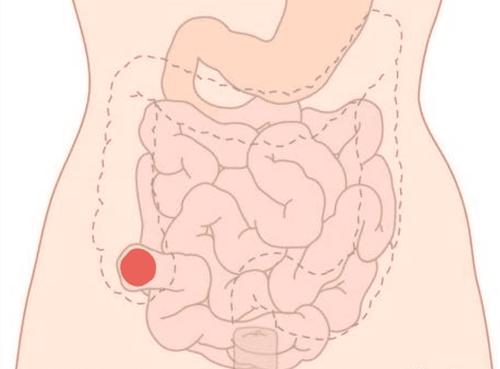This is an automatically translated article.
The article is professionally consulted by Master, Doctor Vu Van Quan - Gastroenterologist - Department of General Surgery & Anesthesiology - Vinmec Hai Phong International HospitalTuberculosis peritoneal is a specific inflammatory lesion of the peritoneum, often occurring secondary to other tuberculosis foci. Peritoneal TB accounts for 6.5% of extrapulmonary TB, ranking 6th among the most common types of TB.
1. What is peritoneal TB?
From damage to the lungs or adjacent organs such as the uterus, intestines, ovaries, ... TB bacteria can pass through the blood or lymphatic route to the peritoneum, causing peritoneal TB. Depending on the location, age, virulence, the number of TB bacteria and the response status of the patient's body, there are clinical forms of acute, subacute and chronic peritoneal tuberculosis with blurred manifestations. pale or loud. Usually, when the disease has turned into a chronic with typical symptoms, the patient will go to the doctor and get treatment.Tuberculosis is mainly caused by the bacterium Mycobacterium tuberculosis. A few are caused by bovine tuberculosis bacteria, atypical tuberculosis bacteria. The disease can occur at any age, more common in people over 40 years old, and women have a higher incidence than men (accounting for 75-90% of cases).
There are 4 ways to bring TB bacteria into the peritoneum:
Tuberculosis of the mesenteric lymph nodes causes TB bacteria to follow the lymphatic route or approach the peritoneum; Tuberculosis of the ileum or tuberculosis of the small intestine extending through the intestinal wall to the peritoneum; Tuberculosis spreads through the bloodstream from distant TB lesions; Tuberculosis bacteria spread from the tube of Fallop into the peritoneum. If not careful to get peritoneal tuberculosis, women will face many risks to reproductive health, affecting long-term happiness.

2. Chronic forms of peritoneal tuberculosis
Chronic peritoneal tuberculosis is divided into 3 types: ascites, pox ulcers and fibrous adhesions:Ascites form The initial manifestation is a mild fever of 37 - 38oC for a long time, usually fever from afternoon and night, can be high fever 39 - 40oC or the patient does not recognize fever. Patients often eat poorly, anorexia, bloating, indigestion, sweating and weight loss. Patients also have symptoms of persistent dull abdominal pain or intermittent pain, unclear pain location, abdominal distension, digestive disorders (erratic solid-liquid stools), gradually enlarged abdomen, feeling ie severe due to peritoneal tuberculosis. In addition, the patient may have soft, mobile, painless lymph nodes along the sternocleidomastoid muscle (if there are lymph nodes, check for associated tuberculosis), possibly combined pleural or pericardial effusion. Tuberculosis of the peritoneum ascites is a mild form, if treated early and with the right regimen, the majority will have a good prognosis. If not treated well, the disease will quickly turn into scleroderma or adherent fibrosis;
Seborrheic form Usually the next stage of ascites. Similar to ascites, patients present with low-grade fever in the afternoon or without fever, many people have continuous and prolonged fever, with fevers of 39 - 40oC. The patient's digestive disorders are more common than ascites: body collapse, fatigue, small rapid pulse, low blood pressure, intermittent abdominal pain, sometimes severe, nausea and vomiting. , abdominal distention but asymmetrical, oval shape, abdominal bloating, loose stools, alternating periods of constipation, stools may be bloody, women may have menstrual disorders (dysmenorrhea, menorrhagia or amenorrhea). Sebaceous peritoneal tuberculosis is a severe form, which can cause abscesses, which can burst, causing pus to leak into the abdominal wall or leak into the colon. Patients can die from exhaustion or serious complications in the gastrointestinal tract. The patient's health deteriorates faster when there are signs of tuberculosis of the lungs or other organs;
Sticky fibrous form: The most severe form of chronic peritoneal TB, the next stage of peritoneal TB ascites or pox ulcers. In this form of disease, the intestinal membrane is sticky, and the patient often has a syndrome of infection and chronic toxicity. The symptoms of peritoneal tuberculosis in this period are: abdominal distension, pain in bowel movements, bowel obstruction, pain relief when passing stools,... Fibroids that adhere to the intestinal segments can cause intestinal tightness, requiring surgical intervention. In addition, the adherent fibrous form can also cause adhesions around the liver, bile, and tubal occlusion. This form is often severe, easily leading to death.
3. Tuberculosis is easily confused with other diseases in the abdomen

Infection syndrome, poisoning with signs of fever, usually mild fever in the afternoon, can also have a fever to 39 - 40oC; Abdominal pain, often a dull ache, sometimes intermittent; Nausea, diarrhea, or constipation; Abdomen distended, gradually enlarged due to fluid in the abdomen; At the stage of fibrous adhesions, the abdomen is concave or round and solid due to fibrous contraction (many cases of fibroids lead to intestinal obstruction), the patient has anorexia, fatigue, and paleness. The symptoms of peritoneal TB mentioned above are easily confused with other diseases of the peritoneum and abdomen such as: appendicitis, intestinal obstruction, acute non-tuberculous peritonitis, primary or secondary peritoneal cancer after colon cancer, stomach cancer, liver cancer,... Therefore, when suspected of having disease in the peritoneum, abdomen, patients need to do tests to exclude tuberculosis.
When a patient has symptoms of suspected peritoneal tuberculosis, tests such as blood test, mantoux test, peritoneal fluid test, laparoscopy and peritoneal biopsy, ultrasound will be indicated. abdominal cavity, ... After examining and determining the disease form, the extent of the disease, the doctors will give the patient a specific TB drug in combination with an appropriate symptomatic drug. If the patient has signs of intestinal obstruction such as severe abdominal pain, vomiting, signs of snakes due to adhesions, surgical intervention will be indicated.
If peritoneal tuberculosis is detected early and anti-tuberculosis drugs are used as prescribed by the doctor, the patient will have a good prognosis. Therefore, when there are symptoms of suspected upper peritoneal tuberculosis, patients should quickly go to specialized hospitals for examination, definitive diagnosis and timely and effective treatment.
Please dial HOTLINE for more information or register for an appointment HERE. Download MyVinmec app to make appointments faster and to manage your bookings easily.














